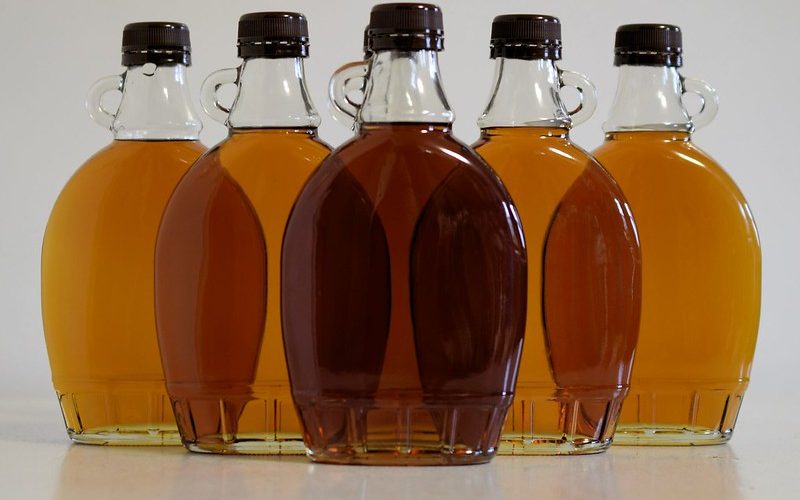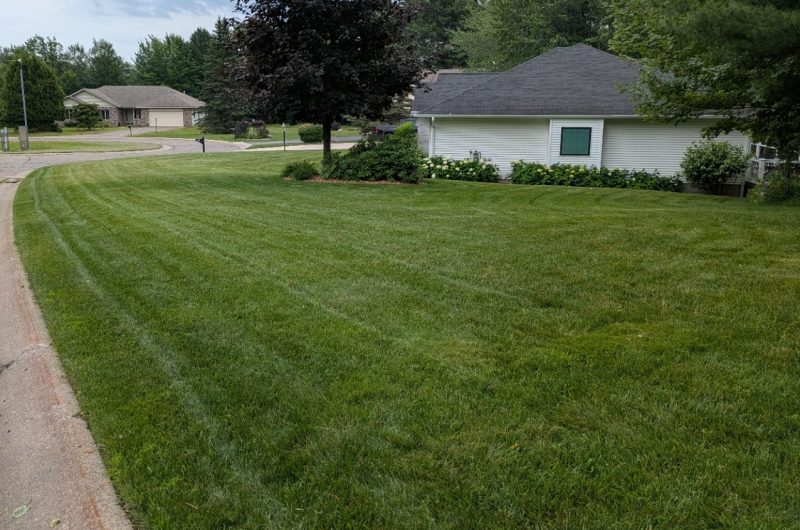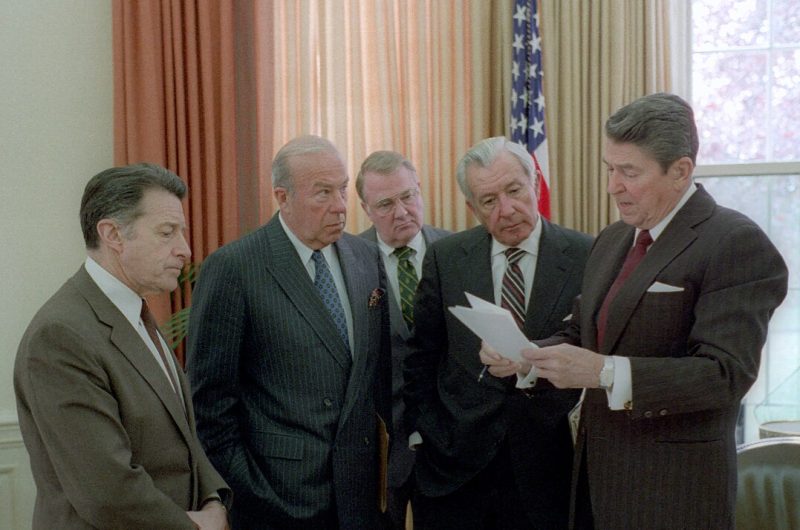Climate Change and Maple Syrup Production in the Upper Peninsula

Long before European settlement in North America, Native Americans used sap from maple trees to produce syrup.
Today, most sap is collected from natural forest stands of sugar maple. It takes approximately 40 gallons of sap to produce 1 gallon of syrup; after its collection, the sap is boiled to remove the water in the sap and concentrate the sugars.
The sap is harvested (or tapped) as a slightly sweet colorless liquid in early spring, when temperatures fall below freezing then rise enough for thawing to occur, this freeze-thaw cycle creates a pressure difference within the tree and causes the sap to flow.
The tapping season ends when temperatures remain consistently above freezing and the tree buds are no longer dormant. Sap harvesting can start as early as February in southern Michigan and go until April in the north.
One of the effects of climate change has been to extend the number of frost-free days and shorten the harvesting season. In Wisconsin, the period of time sap is harvested has shifted ‘considerably earlier’ in recent years, according to a UW-Madison Extension maple syrup specialist.
Within the Upper Peninsula, in areas close to Lake Superior the frost-free season has increased by more than 40 days since 1979. The remainder of this article considers how climate change is affecting the geography of maple syrup production within Michigan and specifically the Upper Peninsula.
Background
The amount of maple syrup produced within the U.S. has more than doubled since 2002 with production concentrated in the Northeast and Great Lakes states. According to the National Agricultural Statistics Service in 2024 Michigan was the 5th largest producer of maple syrup after Vermont, New York, Maine, and Wisconsin.
The total value of US production in 2023 was $159 million with Michigan accounting for about $8 million of this total.
Climate Change’s Effects on Maple Syrup Production
Changing spring conditions and warmer winter temperatures is causing the sap collection season to shift and shorten, as the freeze-thaw season moves earlier in the year, particularly in the southern parts of maple’s range.
A survey of maple producers by university researchers found that the majority had seen earlier tapping seasons. The early arrival of spring can induce early bud break, resulting in so-called “buddy” syrup. Because of its “off-flavor” it’s not marketable as maple syrup because of industry quality standards.
A warming climate not only affects the length of the tapping season, it also affects the ratio of sugar to water in the sap. Warmer average temperatures in the previous year’s growing season are linked to lower sugar concentrations in the next year’s sap, as more water is needed to keep the trees hydrated.
One study predicts that maple sap’s sugar content will decline by about a third over the remainder of this century due to a warming climate.
Maple tree forests face other challenges. A warmer winter is expected to result in less snowpack, making the exposed soil likely to freeze and harm the trees’ fine roots. Increased soil frost depth and duration has been shown to have detrimental effects on sugar maples’ aboveground growth.
Researchers have also linked warmer temperatures with ‘dieback,’ the gradual death of branches which can cause long-term damage. Extreme weather events, such as wind and ice storms that are a feature of climate change, also threaten the health of maple forests along with invasive species.
The Changing Geography of Maple Syrup Production
The well documented effects of climate change on maple trees have led researchers to conclude that future syrup production is likely to increase along sugar maple’s northern range and decline in southern areas (due to its warmer summers).
Michigan provides some evidence to indicate that this process is already underway. In the Upper Peninsula, the number of farms producing maple syrup increased from 71 in 2002 to 138 in 2022 (Table 1). This 94 percent increase in producers compares with a statewide figure of 68 percent.
The U.P. counties with the largest gains in farms include Marquette, Gogebic and Houghton, while Keweenaw, Luce and Ontonagon have remained largely immune to the boom in maple syrup production.
The number of taps in each county provides a measure of the size of maple syrup operations (Table 2). Menominee, Mackinac, Houghton and Chippewa have the largest number of taps, while Alger, Baraga, Iron and Mackinac counties have experienced significant gains.
For the U.P. region, between 2002 and 2022 the total number of taps increased by an estimated 70%, compared with a statewide figure of 58%, providing evidence of a northerly shift in production.
However, it is important to acknowledge that despite recent increases in the number of farms producing maple syrup in Marquette and Houghton, their actual number of taps declined, indicating that some of the industry’s newcomers are relatively small operations.
Due to data disclosure restrictions on individual operations, it is difficult to compare production over the 2002-2022 period. What is clear is that there is significant variation in production between the different counties, and a decrease or increase in taps is not always linked with the amount of syrup produced (Table 3).
The number of taps in Chippewa and Houghton counties dropped, yet production increased significantly. Menominee’s syrup production almost doubled, while experiencing a small increase in its number of taps. The overall production increase is likely linked to the replacement of traditional bucket collection systems with plastic tubing and vacuum systems that allow for more sap to be collected.
Conclusions
Making maple syrup is part of Michigan’s cultural fabric and signals the onset of spring. A warming climate is shortening the tapping season and affecting the sugar content of the sap used in syrup production. In adapting to this reality, the Upper Peninsula’s cooler summer temperatures and cold winters makes it an ideal place to expand production. Only time will tell whether this proves to be a short term phenomenon.









Climate change, really? No longer a subscriber.
“A warming climate” is what my ancestors would have called it. As farmers they were aware of cycles. To call it climate change triggers me. Why are you trying to scare me?
Science and data can be scary when they threaten beliefs. Sorry you’re concerned about being scared but reality can be a “bummer.”
Very interesting story on Maple Syrup production.
Thank you!
Tad
This was a very strange article. Of course, the title included “climate change,” but why? The lead is buried in the middle of the article: the fact that maple syrup production in the U.P. has increased in the past 20 years. Now, the author posits that climate change is causing maple syrup production to travel north. To support this conjecture, one would have to show that production is increasing in northern areas (like the U.P.), BUT DECREASING in southern areas. Okay, we see that production is increasing in the U.P., but there are no statistics showing that production is decreasing in the south. What one can technically glean from the data is that production has increased in the U.P. Whether that is a result of climate change or other economic factors, this data does not provide a definitive answer. So the good news is that maple syrup production is increasing in the U.P. Why is that not the title of this article? We have become conditioned to thinking that climate change is always bad, and indeed, the author of this article includes some potentially negative effects that a warming climate might have on maple trees. That is typical of climate scare tactics. I am not saying that the climate is not changing. I am just objecting the way it was couched in this article.
Thank you Sarah for telling the truth about the facts of atmospheric warming and the harmful ways atmospheric warming has been presented to the public by the media and much of the scientific community. Formerly atmospheric warming was called Global Warming and from the beginning portrayed as the end of world as we know it. When in reality, there are more positive effects, for civilization than negative effects. More rain, slightly warmer temperature, slightly higher CO2 equals, wait for it, more food for everybody, critters included. More frequent and more violent weather is a fantasy unsupported by any actual weather data, but rather generated by obscure weather models supported by yours and my tax dollars. The world could, and probably has, in the past been one big ice cube. Do we have enough hubris to think we can stop that possibility? God created this earth. He has a plan for its future. Man is not God.
As a U.P..Forester since 1979, I am confident to say there are NOT 40 more frost free days today than 1979. Maybe 10 days, maybe.
County Road Commissions take frost data, as well as Michigan highway Department, both would have solid data.
There’s a few more holes in the story.
My Email is in the “required” section.
I’m glad to talk on the phone about some of my non scientific thoughts, of being a UP Forester especially since 1979. Or especially describe Road Commission & Highway Department frost record systems in the U.P.
For the record, I run a Sugar bush annually for family & friend consumption. So I understand the unpredictablity of March & April sapping weather. Usually a few days of sap around Valentine’s week is traditional in past 45 years. In ’24, which is probably the warmest, least snow winter in 45 UP years…sap ran a few days in last half of January – definitely an anomaly of the past 45 years.
I also don’t agree w Maple Dieback being adversely affected by temperature “climate change”. A group of forestry Researchers about 100 miles West of Marquette/NMU, have studied and concluded much of Maple Dieback is evidently a result of a invasive worm. Read the Michigan Tech research reports.
I’ve been reforesting my portion of my grandparents dairy farm in Alger County and planted a 3 acre parcel with wit rows of pine, white oak and sugar maple to try and bridge the sugar maple forest that border the field and ensure ease of running tap lines when they are mature enough to do so.
I’ve planted a mix of pine plantation, oak, birch, sugar maple, black cherry, service berry, hazelnut, and a small orchard over the last 8 years. I’ve got another 1000 trees ordered for planting in early May, which will put me over 12,500 total since 2017.
A very interesting article. It is good to see a positive trend in the U.P. economy with the growth of a sustainable industry with deep historic roots in the Great Lakes region. I found it impressive that Iron County went from almost no production in 2002 to 4,533 gallons of production in 2022.
Thank you for taking the time to write such an informative article about this important topic!